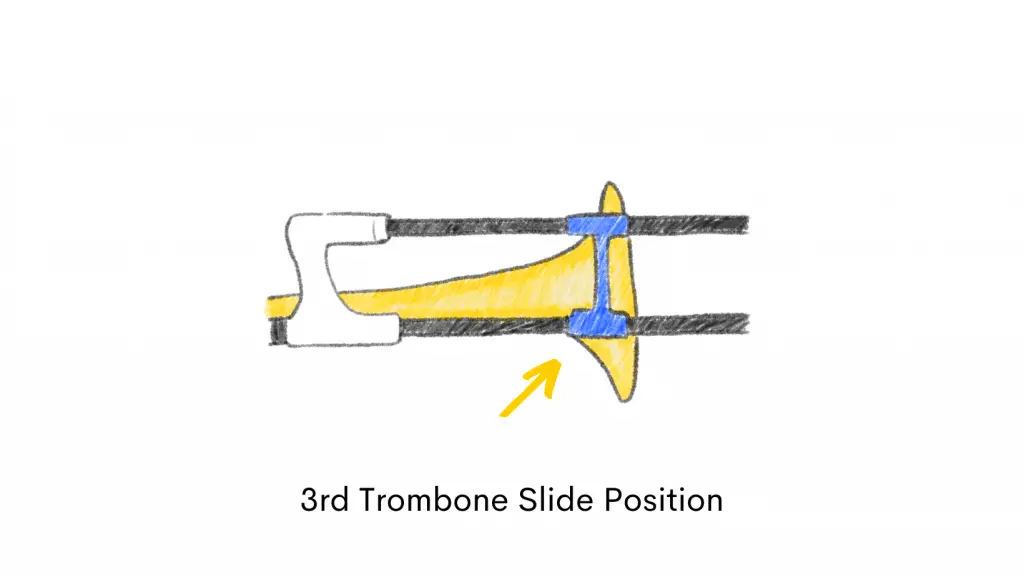The 3rd Slide Position Trombone
The third 3rd slide position trombone is braced just before the bell.

The third slide position is a critical aspect of playing the trombone. It is a position located towards the end of the instrument, just before the bell. The third slide position is used to produce notes that are lower in pitch than those played in the first and second slide positions. It is a long position and requires the player to extend the slide to its fullest length.
The trombone is a brass instrument that produces sound by vibrating the player’s lips against a cup-shaped mouthpiece. The player adjusts the pitch of the sound by moving the trombone slide back and forth. As the slide moves, it changes the length of the tubing inside the instrument, which alters the pitch of the sound produced.
The first slide position on a trombone is the shortest position and each subsequent position increases in length. The third slide position falls towards the end of the slide, just before the bell. It is the longest position and requires the player to extend the slide to its fullest length.
To play in the third slide position, the player must extend the trombone slide to the appropriate length. This can be done by measuring the distance from the end of the slide to the bell of the instrument, which should be around 7 to 9 inches. However, some players may find it more comfortable to use a visual or tactile cue to find the correct position.
Once in the third slide position, the player must adjust their embouchure to compensate for the lower pitch of the notes produced. The embouchure is the way in which the player uses their lips, tongue, and mouth to produce sound. In the third slide position, the player must use a looser embouchure than in the first or second positions to produce the desired pitch.
The third slide position is used frequently in a variety of musical genres. It is often used in lower registers, to create a darker, more sonorous tone. The third slide position is used in lyrical passages in classical music, to produce a smooth transition between notes, or to create a warm and mellow sound in jazz and popular music.
Playing in the third slide position can be challenging as it requires careful attention to intonation, or the accuracy of the pitch produced. The player must be aware of the position of their slide and make fine adjustments to the position to produce accurate pitches. Even small variations in the slide position can significantly affect the pitch produced.
To master the third slide position, the player must develop a keen sense of pitch and a strong awareness of the position of their slide. Regular practice is essential to achieve accurate intonation and fluid movement between slide positions.
The third slide position is also crucial to playing certain techniques on the trombone, such as glissando or smear. Glissando is a technique where the player slides smoothly from one note to another, and smear is a technique where the player smears the sound across multiple notes, creating a glissando-like effect. Both techniques require the player to move fluidly between slide positions, and the third slide position is an essential part of this process.
In addition to the 3rd slide position, trombone players must also be proficient in the other six slide positions to play the full range of notes available on the instrument. Each position requires precise slide placement and embouchure control, and the player must be able to move fluidly between positions to play smoothly and accurately.
The 3rd slide position is a critical aspect of playing the trombone. It is a long position located towards the end of the slide, just before the bell, and is used to produce notes that are lower in pitch than those played in the first and second slide positions. The third slide position requires the player to extend the slide to its fullest length and use a looser embouchure to produce the desired pitch. Regular practice is necessary
